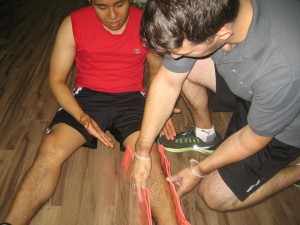
When the bone has been forcibly moved from its normal position at the joint, a dislocation occurs. When the two ends of bones are displaced from their normal positions, the bones become dis or “apart” or location or “a place of settlement or activity,” hence there is a dislocation. A dislocated bone may lead to impairment of ligaments, nerves and blood vessels.
Dislocation usually results from falls, car accidents or collision during contact. The most common dislocation sites are the shoulders and elbows for adults and children, respectively. The larger joints of the body are more prone to dislocation. Nonetheless, the hand’s position makes the thumb susceptible to dislocation when it is bent the wrong way. Due to the dislocation, there will be a momentary dislocation and disable the action of the joint. Swelling and severe pain are some of the symptoms of dislocation.
If treated early, most dislocations will not lead to permanent damage. Therefore, medical attention must be called for immediately. The victim should not be moved, especially if neck injury is suspected. Only move the victim if there is danger in the immediate surroundings. More so, dislocated bones should not be pushed back to its joint. Moving the bone may result to damaging the joint and its adjacent muscles, ligaments, nerves or blood vessels. Small nerve and blood vessels may be trapped and result to numb digits. Immobilize the injured area.
If one is trained to do so, sling and/ or splint the injury in its original location. Boards, rolled newspaper and numerous other materials may be used as splints. To minimize discomfort, splints may be padded. Slings may be used for arm or shoulder injuries. To reduce swelling and assist in relieving pain, apply ice
on the affected joint. This will control internal bleeding and accumulation of fluids in and surrounding area of the affected joint. Ice must not be directly applied to the skin and should be wrapped in a towel or other pieces of clothing. Check for breathing if injury is serious. If no breathing is observed, commence CPR. Raise the feet one foot. To reduce body heat loss, cover the patient with a blanket.
In most medical emergencies, first aid training and CPR may be applied. Especially athletes and those who work with them should be knowledgeable of proper treatment. workplace approved programs offer first aid training and CPR courses which are offered to the community.
